Difference between revisions of "Messerschmitt Me-262 A-1a/U4"
m |
|||
| (3 intermediate revisions by the same user not shown) | |||
| Line 20: | Line 20: | ||
| − | The Messerschmitt Me-262 A-1a/U4 (in some sources know as the Pulkzerstörer "Pack destroyer") was a modification of the standard Me-262 A-1a airframe, replacing the four 30mm Mk108 cannons in the nose with a single 50mm Mk214 cannon. The 30mm Mk108 while a powerful weapon had a short range which along with the Me-262's high speed meant that the engagement time against enemy aircraft was often very short, especially against slow moving bombers. The 50mm Mk214 greatly increased the damage and weapon range of the Me-262, even giving it the ability to engage bombers from outside of their defensive range. The weapon had a limited amount of ammunition and was difficult to use while manoeuvring though, making it unsuitable in a dogfight with other fighters. Only two of these aircraft | + | The Messerschmitt Me-262 A-1a/U4 (in some sources know as the Pulkzerstörer "Pack destroyer") was a modification of the standard Me-262 A-1a airframe, replacing the four 30mm Mk108 cannons in the nose with a single 50mm Mk214 cannon. The 30mm Mk108 while a powerful weapon had a short range which along with the Me-262's high speed meant that the engagement time against enemy aircraft was often very short, especially against slow moving bombers. The 50mm Mk214 greatly increased the damage and weapon range of the Me-262, even giving it the ability to engage bombers from outside of their defensive range. The weapon had a limited amount of ammunition and was difficult to use while manoeuvring though, making it unsuitable in a dogfight with other fighters. Only two of these aircraft were built Wk/nr 111899 & Wk/nr 170083 in early 1945, there are rumours that one of them was used in combat before the war ended but no evidence has been found to substantiate these claims. |
| + | |||
| + | |||
| + | After the war Wk/nr 170083 was captured by American forces at Lechfeld airfield and transferred to the 54th Air Disarmament Squadron led by Colonel Watson (aka Watson's Whizzers), a unit which was tasked with finding and capturing advanced enemy aircraft. In preparations for transferring the aircraft back to American for testing its markings were repainted with USAF roundels and was named Wilma Jeanne after Watson's wife. It was then flown to Cherbourg where it was loaded onto the British aircraft carrier HMS Reaper along with other advanced German aircraft for the long journey across the Atlantic. Arriving in New Jersey the aircraft were then flown to Freeman Army Airfield, during the flight a turbine blade broke in the engine of the Me-262 A-1a/U4 and the plane was destroyed in the resulting crashed. | ||
==Note== | ==Note== | ||
| − | In game the Me-262 A-1a/U4 has a limited amount of ammunition that takes | + | In game the Me-262 A-1a/U4 has a limited amount of ammunition that takes some time to completely reload once fired leaving it vulnerable to enemy fighters in a sustained engagement. |
Latest revision as of 13:13, 16 April 2017
| ||||||||||||||||||||||||||||
After the war Wk/nr 170083 was captured by American forces at Lechfeld airfield and transferred to the 54th Air Disarmament Squadron led by Colonel Watson (aka Watson's Whizzers), a unit which was tasked with finding and capturing advanced enemy aircraft. In preparations for transferring the aircraft back to American for testing its markings were repainted with USAF roundels and was named Wilma Jeanne after Watson's wife. It was then flown to Cherbourg where it was loaded onto the British aircraft carrier HMS Reaper along with other advanced German aircraft for the long journey across the Atlantic. Arriving in New Jersey the aircraft were then flown to Freeman Army Airfield, during the flight a turbine blade broke in the engine of the Me-262 A-1a/U4 and the plane was destroyed in the resulting crashed.
Note
In game the Me-262 A-1a/U4 has a limited amount of ammunition that takes some time to completely reload once fired leaving it vulnerable to enemy fighters in a sustained engagement.
References
| 1930 - 1940: Pre-War |
1940 - 1942: Early-War |
1942 - 1944: Mid-War |
1944 - 1945: Late-War |
1945 - 1960: Post-War |
1930 - 1960: Total-War |
|
| Buildable | Yes | |||||
| Bonus Crate | Yes | Yes | Yes |
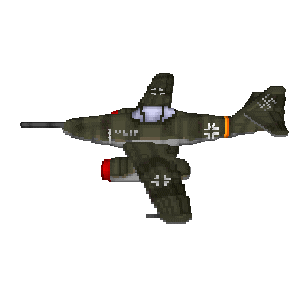
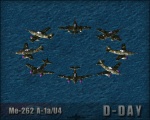

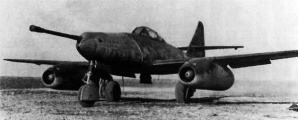
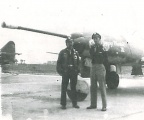
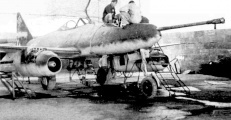
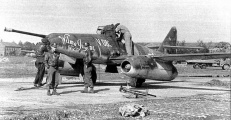
Enable comment auto-refresher